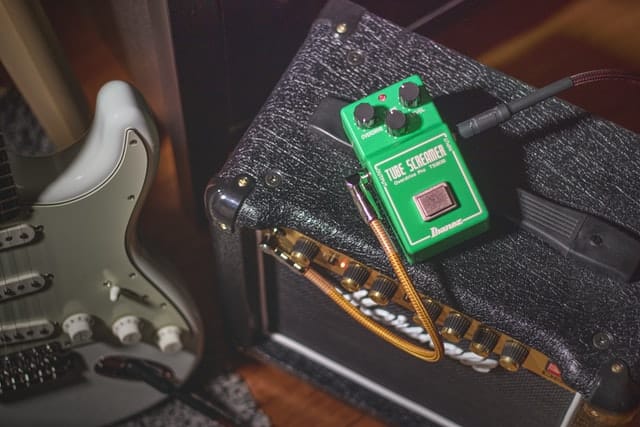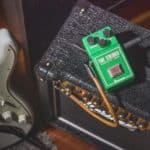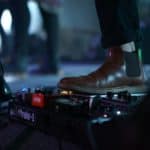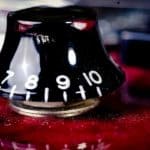As guitar players, some of us have a primal urge for one thing: more volume!
Guitar pedals do offer us different ways to control and set that glorious volume (whether making things louder, or even quieter).
The Level knob differs from pedal to pedal. For most, it’ll control the overall volume. It also differs from the gain control, which is mostly used to add distortion to the signal. Knowing how your level knob works, especially on gain and distortion-style pedals, does open great tonal possibilities.
So, let’s turn up the heat and see what we can do with this little piece of circuitry!
What are level knobs in pedals for?
Level controls are there to let you dial in volume. The type of volume does differ from circuit to circuit though.
For some, it’s the overall volume of the signal (ie. how loud your guitar is by the time it gets to the amp).
On others, it’s the overall volume of an effect (ie. How loud are the repeats of a delay against your dry signal.)
We’ll demystify this further in the next section.
Is a level knob the same as a volume knob?
The easy answer to this is that it depends on the pedal.
On some pedals, a knob marked “Level” (such as on overdrives and distortions) act as a volume knob.
This basically controls the overall output of the processed signal before it continues along your chain.
Sometimes these knobs will actually be labeled as “volume” on some pedals (such as a Big Muff), or as “output” (like on the MXR Distortion+ II), but ultimately serve the same purpose.
On some other pedals, the level knob will actually control the amount an effect is present in your signal, without affecting the volume.
This is more common on modulation pedals (such as the Boss CE-5 chorus ensemble), and time-based effects (such as TC Electronic’s Flashback and Hall of Fame pedals). What these do will basically add the processed signal over your dry signal, acting more like a volume for the effect, rather than your overall signal (much like a blend/mix control would on certain pedals).
For this piece, we’ll be looking more closely at its use as an overall volume control for your signal. For its use as an overall level control for wet effects, you can refer to our previous article What Does the Blend/Mix Knob Do in Pedals?
What’s the difference between level and gain in pedals?
These knobs do function the way that they would on your amplifier. The gain knob is what will add distortion to the signal, from a minimal amount to the maximum amount the control on the pedal will allow.
The level control would be the same as the master volume knob on your amplifier. This controls the overall output of the signal, making it quieter or louder.
As we’ll see later, having the ability to control the overall volume independently of the gain has some benefits for certain players who want sonic differences between the levels of their clean sound and their distorted sound.
What’s the best setting for the level knob on a pedal?
For most players, you’ll want to set the level knob to unity gain.
“Hey, want is unity gain, exactly?” Well, I’m glad you asked! Unity gain means that the overall volume of the sound when the pedal is on is (more-or-less) the same as when the pedal is off.
For some pedals, setting the gain control at noon is a good place to start, but use your ears; setting the control at noon does not mean you’re at unity. So, tweak it until you find the sweet spot.
Another way to set a level knob is to boost the signal to make it louder.
If you have a great lead sound, or you want your distorted sound to be significantly louder than your clean sound, you can turn up the level control to get a great volume boost between sounds.
If you’re the soloist in the band, this serves two functions. For starters, it’ll make you louder without relying on the soundman to bring you up in the mix.
Also, the louder signal will push the front end of your amp harder, giving you some added distortion and sustain.
In fact, most boost pedals (such as the TC Electronics Spark Mini), have just a level control to make your guitar signal louder.
Use it before distortion and overdrive to goose the volume a bit, while adding more distortion by overloading your pedals, or after those pedals to have a greater impact on the volume of your sound.
Another cool way to set your level is as an “anti-boost” control. If you’re the type of player who gets their clean sound by turning down the volume of a crunchy amp with your guitar, consider using an EQ pedal with a level control.
You can turn the overall volume down, with less signal hitting the front end of the amplifier while using the EQ to boost any high frequencies that can roll off when turning the guitar down. A clean channel in a pedal!
Why do some pedals not have a level knob?
Some pedals, like the MXR Phase 90, have no level control as part of their circuits.
It would be safe to assume that the circuit maintains unity gain from input to output, removing the need for it.
For some players, this is fine. But others may want ultimate fine-tuneability of everything happening in their chain, making the lack of this feature a deal-breaker.
Ultimately, if you have this control on your pedals, don’t be afraid to try out some of these tricks and see what loud (or not-so-loud) sounds you can create!

Hello there, my name is Ramiro and I’ve been playing guitar for almost 20 years. I’m obsessed with everything gear-related and I thought it might be worth sharing it. From guitars, pedals, amps, and synths to studio gear and production tips, I hope you find what I post here useful, and I’ll try my best to keep it entertaining also.





